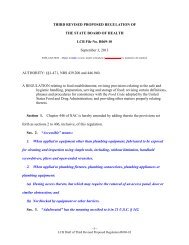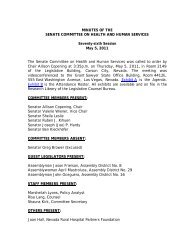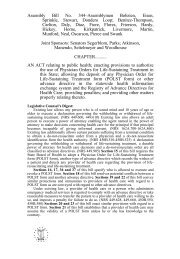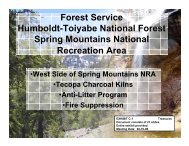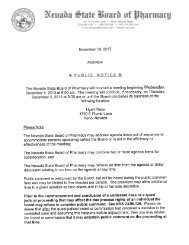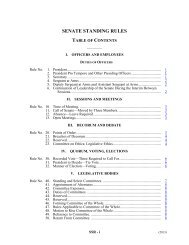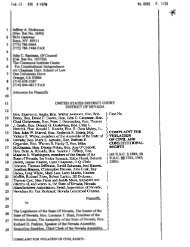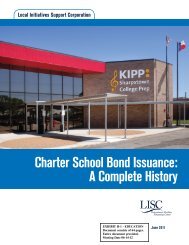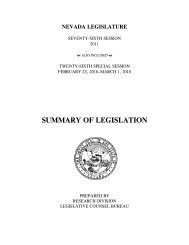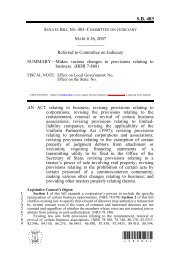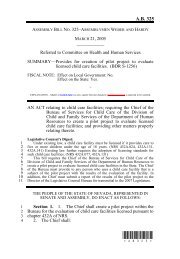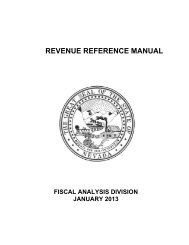Nevada Pre-Kindergarten Standards
Nevada Pre-Kindergarten Standards
Nevada Pre-Kindergarten Standards
You also want an ePaper? Increase the reach of your titles
YUMPU automatically turns print PDFs into web optimized ePapers that Google loves.
Content Standard 3.0: Music and Movement - Improvisation<br />
Indicator MM=Music and Movement<br />
3.PK.1 Improvise simple songs and rhythmic patterns using<br />
voice, body or instrument.<br />
3.PK.3 Take familiar songs and change the words, feelings,<br />
sound of voice or dynamics.<br />
K.3.3.1 Improvise short melodic and rhythmic patterns.<br />
K.4.3.1 Create music to interpret stories, rhymes, and poetry.<br />
K.4.3.2 Create short songs and instrumental pieces.<br />
K.4.3.3 Organize pieces using a variety of sound sources.<br />
Content Standard 6.0: Music and Movement - Listening<br />
Indicator MM=Music and Movement<br />
6.PK.1 Identify simple elements of music such as loud/soft<br />
and fast/slow.<br />
K6.3.1 Identify simple elements of music.<br />
Creative Expression<br />
Examples: Children will/may...<br />
Create own words and sing them with<br />
a familiar tune.<br />
Change their voice tone to be funny<br />
or serious.<br />
Examples: Children will/may...<br />
Understand the difference between<br />
loud /soft, fast/slow when singing.<br />
Be able to demonstrate how to<br />
incorporate simple elements of music.<br />
Supportive Practice: Practitioner/Adult will…<br />
Sing a variety of songs and repeatedly<br />
expose children to them.<br />
Model for children how to change words<br />
and sounds to create different<br />
songs and music.<br />
Model for children how to change the<br />
rhythm of a song (e.g., sing it faster or<br />
slower).<br />
Show children how to change the feeling of<br />
a song by singing a familiar song in a happy<br />
voice, sad voice, etc.<br />
Encourage children to make up their own<br />
songs and music.<br />
Have children perform and sing their songs<br />
for their classmates.<br />
Write down the words to children’s songs<br />
and create a class songbook.<br />
Supportive Practice: Practitioner/Adult will…<br />
Take familiar songs and encourage the<br />
children to try and sing them slow and fast<br />
or loud and soft.<br />
Play music and have the children move to<br />
the rhythm, beat, or tempo of the song.<br />
Play music and verbally identify if it is<br />
playing slow, fast, loud, or soft.<br />
Talk about songs that you know and whether<br />
they are slow, fast, soft, or loud.<br />
57



